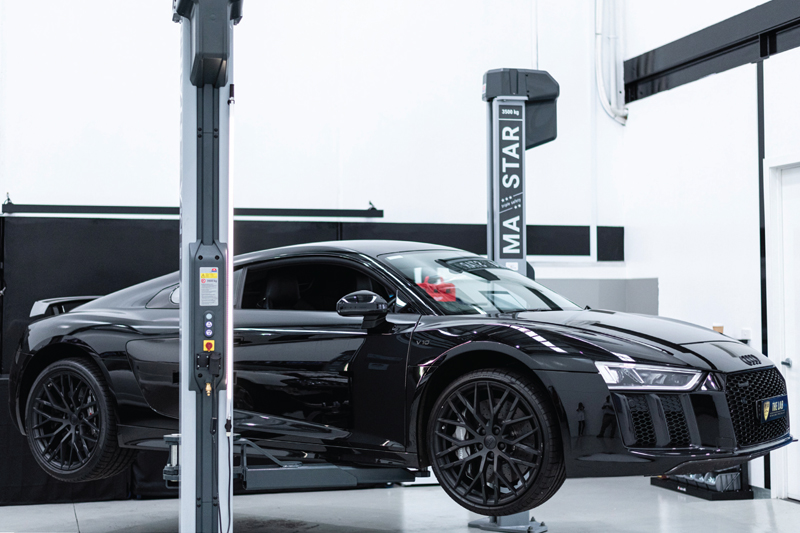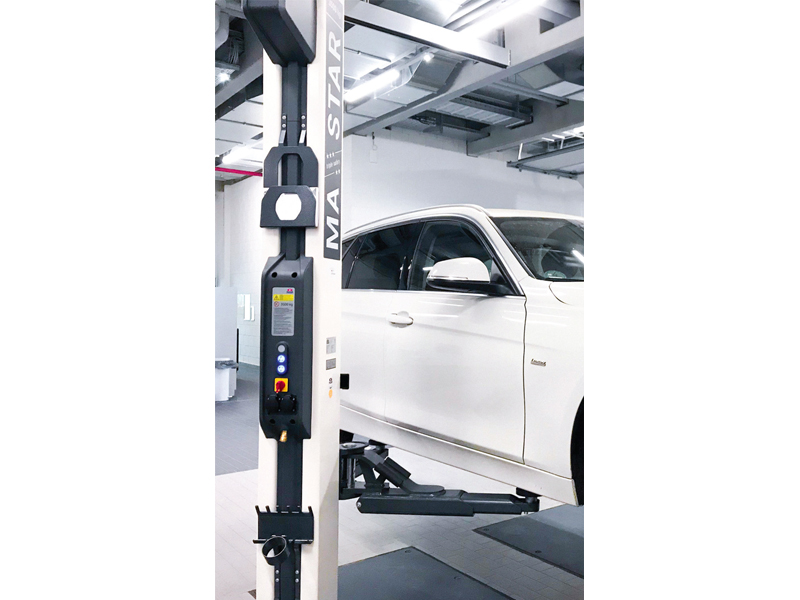
Maintaining lift pads and arm locks, as well as the proper use of adaptors rather than “lumps of wood”, are all key safety messages that Maha is keen to emphasise. Here, the workshop equipment supplier advises technicians on how to maximise the longevity and performance of their two-post lifts, as well as keep themselves and the vehicles they’re working on safe.
Lifting equipment needs to be assessed by a professional every 6 months, in accordance with lifting operations and lifting equipment regulations 1998 legislation. That same equipment also needs to be maintained regularly, the frequency of which is set out by the manufacturers’ recommendations in keeping with provision and use of work equipment regulations 1998. Not doing so can lead to investigation by the health and safety executive, then, if culpable, fines and even imprisonment, depending on the severity of the respective issue.
Irresponsible users are not only putting the vehicles they’re working on in danger, but also their employer’s reputation and, more importantly, they’re putting themselves and their colleagues in a perilous position too.
Maha’s team of experts are still seeing scenarios where correct maintenance procedures for lift pads and arm locks, as well as the use of appropriate adaptors, are not taking place.
The equipment specialist’s sales manager, Nick Austin, commented on the issue: “Despite the risks, we are still observing deteriorated rubber pads on the ends of lifts where steel is then exposed. The point of the pads is to provide suitable contact with the vehicle to avoid it slipping off.”
The solution to that is checking the pads regularly and replacing when necessary. Replacement rubber pads are available to buy and are not expensive to replace, so why take the risk?
Chancing your arm?
Over time arm locks can deteriorate, due to wear and tear and considerable use, but misuse is also a common problem. The arm lock mechanism on any two-post lift is one of the most important safety features and should be checked for correct function before and during every use. Correct positioning and locking of the arms is very important.

Block party
Nick also reported witnessing technicians use a two-post lift without the correct adaptors; instead using blocks of wood.
Nick said: “Rather than have a 200mm sleeve to reach the chassis or use a U-shaped adaptor that goes each side of the chassis, like an anti-slip sleeve – the rubber pad comes off and the anti-slip goes on – I continue to see an ordinary two-post lift with a great big oily block of wood between the vehicle and the lift pad, which is completely unsafe!”
Once again, this issue can be easily avoided, but Nick is concerned that because there are so many adaptors available and workshop managers are under pressure to get a vehicle up in the air, a block of wood is viewed as a solution – but it isn’t.
He added: “It’s important that technicians are provided with the right adaptors, as it is vital to ensure the safe and effective use of a two-post lift. Once again, it’s a safety issue and could lead to serious consequences if an incident occurs. Like the rubber pads, they’re not expensive and certainly not as expensive as a new two-post lift. We offer many types of adaptors, for many different vehicles including various EVs. Essentially, they lock onto the chassis via a locating hole or dedicated position along the sill. This type offers increased stability to prevent slip – why buy a lift but not the adaptors?
“Triple safety” offered
Maha’s MA Star range of two-post lifts claims to guarantee “outstanding” safety, thanks to its spindle nut package, patented ‘giraffe’ nut breakage detection, motor brake, sturdy and solid design, safe usability, simple maintenance and service, easy installation and intuitive operation.
These two-post lifts lift to 1,995mm and feature stable and torsion-resistant columns made from rolled H-section steel. They’re capable of lifting vehicles up between 3.5, 5.5 or 6.5 tonnes, depending on which option is most appropriate for the workshop in question. There is also an optional height measurement light barrier that detects any obstacles on raising and lowering.
Thanks to all of the safety features, along with their straightforward plug and play and intuitive, LED-based interfaces, the MA Star range of lifts are a simple but effective range in practice.









